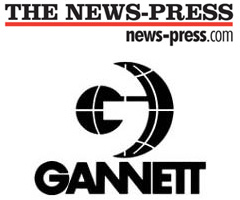Introduction
 In the summer of 2006, the editors of the
News-Press
, a metro daily in Fort Myers, Florida, worried that “watchdog” journalism—aggressive investigations of public officials and the use of public funds—was in danger. Short, timely news updates, rather than longer investigative pieces that often took weeks or months to report and assemble, increasingly set the standard for Internet-delivered news. At the same time, the
News-Press
’ editors recognized that the Internet could be a tremendous aid to exactly the kind of watchdog work they hoped to perform.
In the summer of 2006, the editors of the
News-Press
, a metro daily in Fort Myers, Florida, worried that “watchdog” journalism—aggressive investigations of public officials and the use of public funds—was in danger. Short, timely news updates, rather than longer investigative pieces that often took weeks or months to report and assemble, increasingly set the standard for Internet-delivered news. At the same time, the
News-Press
’ editors recognized that the Internet could be a tremendous aid to exactly the kind of watchdog work they hoped to perform.
That June, two executives from Gannett, the News-Press ’ parent company, visited the paper and proposed an innovative way to harness technology for investigative journalism. They suggested that the paper solicit the help of its audience in examining their community. The paper’s readership, they speculated, had ideas, expertise, and access to people and documents that no member of the News-Press ’ small staff had. The paper could collect and share the combined knowledge of its own public.
This strategy, labeled “crowdsourcing,” had already enjoyed success in the private sector. Corporations like the Boeing Company and Procter & Gamble had crowdsourced certain research and development functions, posting some of their most difficult scientific problems online and soliciting solutions. The Gannett executives wanted to see the strategy employed in journalism and hoped the News-Press would serve as a laboratory.
Editors at the News-Press were intrigued, but not entirely persuaded. The breaking story in mid-2006 that lent itself most readily to crowdsourcing was about a local utilities project. Prices for sewer and potable water hookups to homes in the city of Cape Coral had recently shot up, and the newspaper had reported on the project’s devastating financial impact on city residents, some of whom feared they would be forced to sell their homes. It remained unclear, however, why the cost to citizens had skyrocketed.
There were potential benefits to crowdsourcing the story. Affected residents could suggest angles to pursue and offer eyewitness reports of the utility project’s day-to-day progress. The News-Press might obtain from its readers information that would otherwise be unavailable to reporters. It would be as if the newspaper had thousands of reporters on the story, rather than the six who constituted the Cape Coral bureau. Residents were likely to be receptive if the paper appealed for their input, since the issue was one that affected many financially. The project could further engage existing readers and perhaps attract new ones.
But there were risks as well. The request for information could stimulate an unmanageable volume of feedback. The News-Press ’ editors worried about what they owed readers who offered input: Were editors and reporters obliged to respond to each of potentially hundreds of emails and phone calls? How much could they trust their readers to offer credible information? What forum should the News-Press provide for reader input and, if it was public, was the paper responsible for the accuracy of what appeared there? If the News-Press were to test-run crowdsourcing for journalism, editors would have to make some challenging decisions.